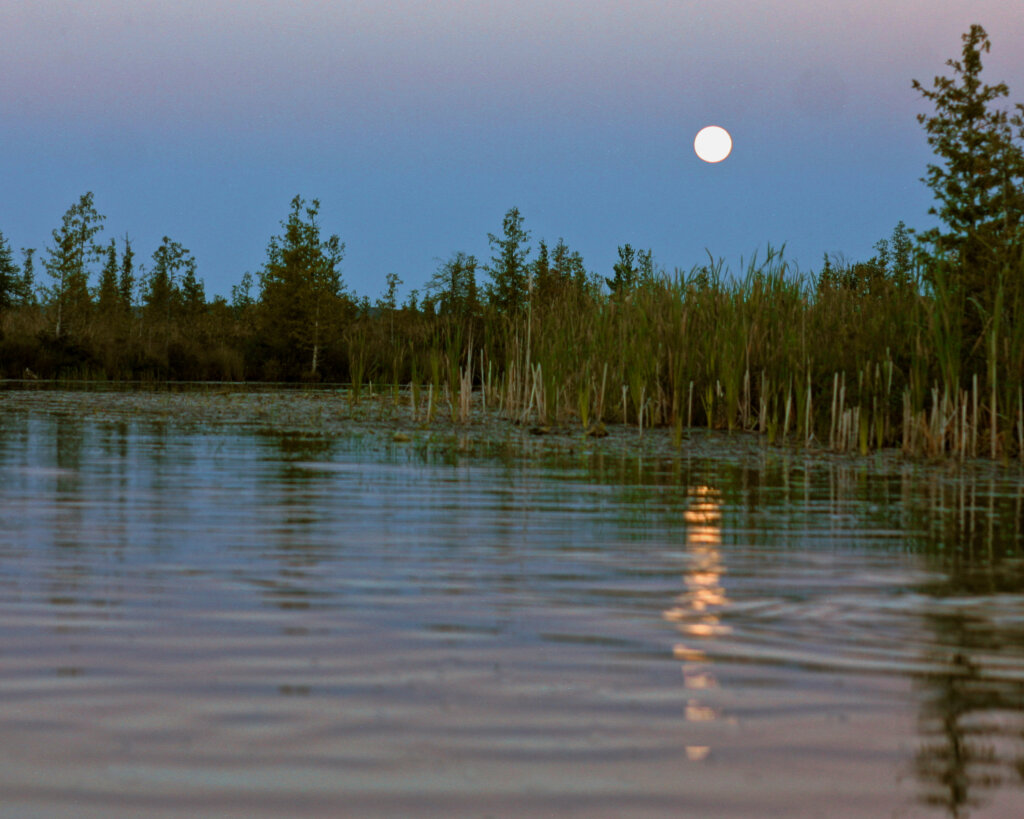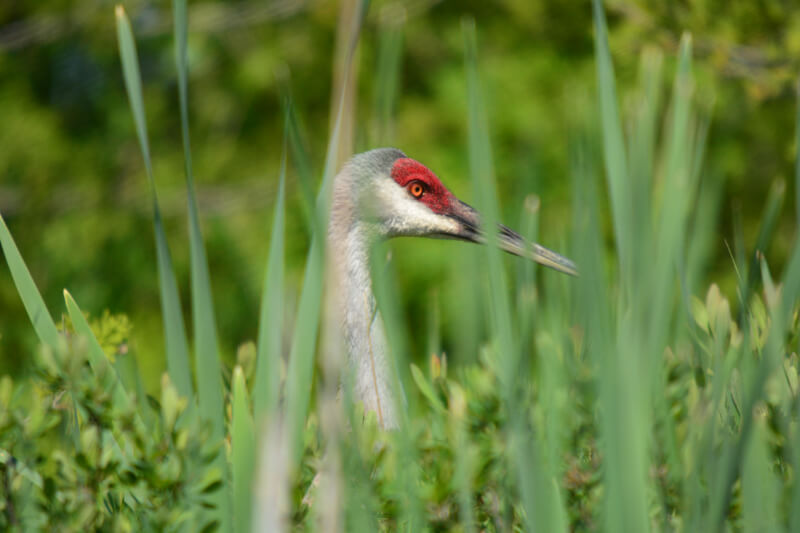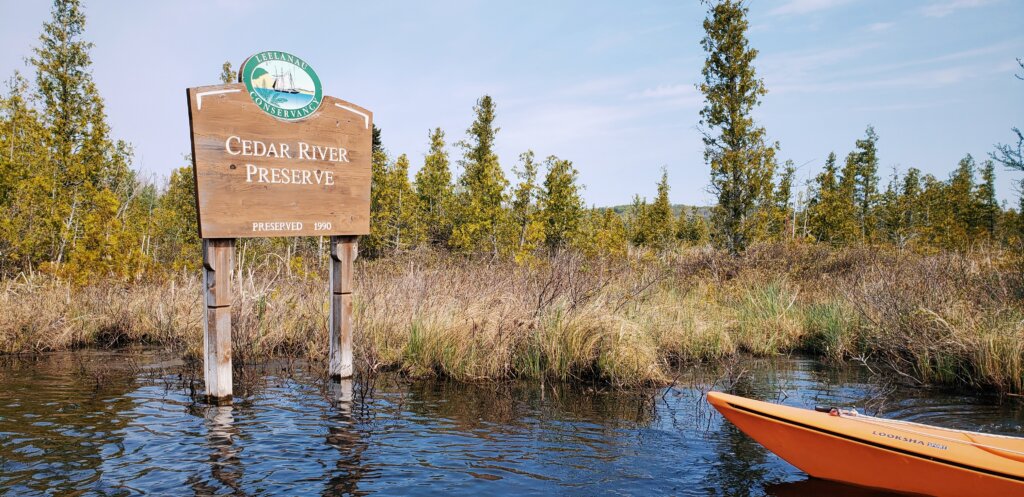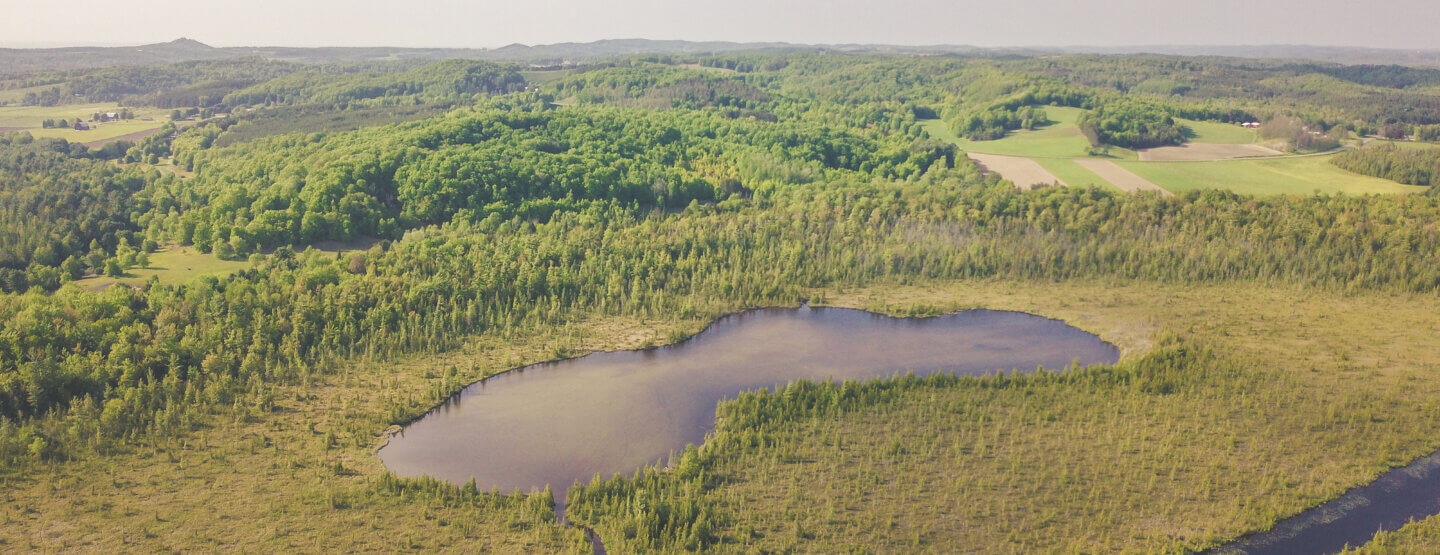Thirty-three years ago, we started the work to save Victoria Creek, also known as the Cedar River or the Solon Swamp.
With help from hundreds of citizens passionate about water quality, we protected the first 100 acres of what is now the Cedar River Preserve in 1990. Then in 2004, we protected an additional 80 acres near the mouth of the river. Still later, a land exchange with State of Michigan conserved more land. The preserve is now at 548 acres and rich with birds, muskrats, otters, mink, turtles, fish, and rare plant life. It helps keep our water quality high and provides necessary habitat for fish and other wildlife.
Professional botanist and Leelanau local Liana May is proud that the county is home to such a complex and delicate wetland system. “It’s essentially the biological gem of Leelanau County,” she explained. “It’s one of the largest intact wetland complexes in this region, largely due to it having a low amount of human disturbance.”

The Past
The Solon Swamp is the wetlands surrounding the Cedar River. There has been no major impact on the river and wetlands in over 100 years. “It doesn’t appear to have undergone many disturbances in the past. It was definitely impacted when they put in the Leland Dam in the late 1800s, and the lake level was raised a few feet. But other than that, and logging, there’s been no other signs of significant human impact,” May said. The surrounding forests were logged to the edge of the wetlands in the early 1900s. The forest surrounding the Solon Swamp today is second growth; however, the original wetlands are centuries old and still intact. “So, the wetland forest and the upland forest have all been logged, but when you get down to the herbaceous wetland area, the fen, it’s pretty much the same it’s been historically.”
The Present
A few years ago, a Floristic Quality Assessment (FQA) was taken at the Cedar River Preserve. An FQA is a land rating system based on factors like plant species quality. An FQA rating of 50 is considered a rare wetland with plenty of interesting plant life and quality habitat. The CRP is rated at a jaw-dropping 96. With low human impact, the preserve and its surrounding wetlands have thrived. The beautiful preserve is best enjoyed by kayak or canoe. The waterway from the mouth of Lake Leelanau to the Village of Cedar is protected and open to all. A paddle through the Cedar River Preserve is the perfect place to view stunning yellow pond lilies, see a mink slip into the water, discover nesting Sandhill Cranes, or watch an osprey dive for its dinner.

Because the CRP is an immense swath of wetland, it cleans the water of Lake Leelanau. As water flows through the wetlands, aquatic vegetation catches and filters debris. While one could look at some of these plants and think they’re weeds, they’re not. “There’s a bunch of these different, broad-leafed plants that grow underwater and make up the structure of these underwater ecosystems. This underwater vegetation is where many fish and other macroinvertebrate nurseries are.”
The Future
Under the care of the Leelanau Conservancy and the Department of Natural Resources, the Cedar River and its surrounding wetlands will remain healthy and intact for years to come. Of course, there will always be threats to the Cedar River, the biggest being boat traffic and invasive species. “The physical impact from the boat is the wake,” May said. “The river is so slow moving that the aquatic community isn’t used to a wake. Also, you have a lot of boats that cut across the shallow banks and chop up vegetation like wild rice and lilies.” And oil, gas, and other chemicals used in boat maintenance aren’t good for the river’s sediment. Increased boat traffic also makes the Cedar River vulnerable to invasive species like Eurasian milfoil. And while spots of infestation have been caught in Lake Leelanau, Eurasian milfoil is much harder to combat in a river because it flows.

Leelanau has seen some changes. The Cedar River Preserve is one of the wildest places left—the Everglades of Michigan’s Lower Peninsula. Even today, the river is subject to forces that would alter it if permitted. Despite this, the Cedar River has continued to hold on to its roots. In essence, the same river today as it was centuries ago, we look forward to seeing its beauty, resilience, and wildlife unchanged in another 100 years.




